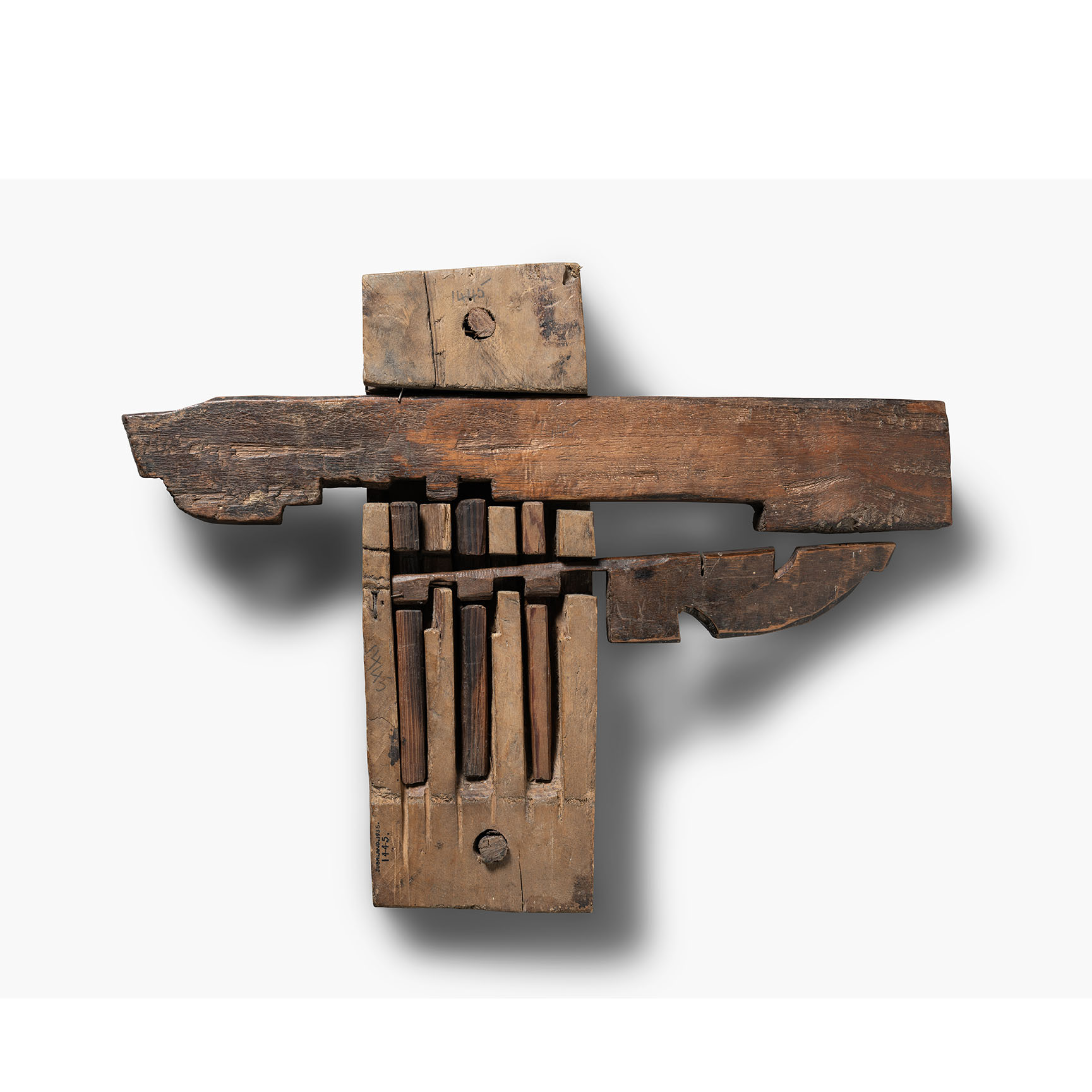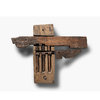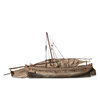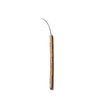Are there any accounts or depictions of this type of transportation from the medieval period or was it a later adoption?


You are using an out of date browser. It may not display this or other websites correctly.
You should upgrade or use an alternative browser.
You should upgrade or use an alternative browser.
Wheeled Camel Carriages?
- Thread starter Three Moons
- Start date
No We Wuzz Wheels enthusiasts on Sspot?
Other historic applications of the wheel in the Somali peninsula, a ship’s helm;


Historic textile machines;

The Potter’s Wheel;

Water Wheel;

The Country of Mogadishu (Mu-ku-tu-shu kuo)
[This place] lies on the sea-shore. Piles of stones constitute the city-wall. They drill soldiers who are expert archers. The customs [are such that] they esteem the mean and fierce. The houses are of layers of stone and four or five storeys high, [the places for] dwelling, cooking, easing oneself, and entertaining guests, all being on the upper floors. Men and women knot up the hair into four hanging plaits. Round the waist they wear a small cotton cloth. The women's hair is coiled up, and yellow varnish makes [their] heads [shine] bright. From both ears hang cords with several round ornaments, round the neck they wear a silver ring, and necklaces hang down onto the breast. When they go out, a single cloth covers them and black gauze hides the face. On [their] feet they wear leather shoes.
The mountains near the vast land are [covered with] yellow bare earth and stones and do not grow plants and trees. The fields are barren and give small returns.
[Sometimes] it does not rain for several years. They bore wells and [use] cog-wheels, and goat skins serve as pouches for water. Camels, horses, oxen, and goats are all fed on dried sea-fish. The land produces frankincense and "golden-spotted" leopards; ambergris is collected from the sea. The commodities used [in trade with them] are such things as gold and silver, coloured satins, sandalwood, rice and cereals, por- celain articles, and coloured thin silk.
The Overall Survey of the Star-raft by Fei Xin (1385 - 1436)
(example)
The Country of Mogadishu (Mu-ku-tu-shu kuo)
[This place] lies on the sea-shore. Piles of stones constitute the city-wall. They drill soldiers who are expert archers. The customs [are such that] they esteem the mean and fierce. The houses are of layers of stone and four or five storeys high, [the places for] dwelling, cooking, easing oneself, and entertaining guests, all being on the upper floors. Men and women knot up the hair into four hanging plaits. Round the waist they wear a small cotton cloth. The women's hair is coiled up, and yellow varnish makes [their] heads [shine] bright. From both ears hang cords with several round ornaments, round the neck they wear a silver ring, and necklaces hang down onto the breast. When they go out, a single cloth covers them and black gauze hides the face. On [their] feet they wear leather shoes.
The mountains near the vast land are [covered with] yellow bare earth and stones and do not grow plants and trees. The fields are barren and give small returns.
[Sometimes] it does not rain for several years. They bore wells and [use] cog-wheels, and goat skins serve as pouches for water. Camels, horses, oxen, and goats are all fed on dried sea-fish. The land produces frankincense and "golden-spotted" leopards; ambergris is collected from the sea. The commodities used [in trade with them] are such things as gold and silver, coloured satins, sandalwood, rice and cereals, por- celain articles, and coloured thin silk.
The Overall Survey of the Star-raft by Fei Xin (1385 - 1436)
Emir of Zayla
𝕹𝖆𝖙𝖎𝖔𝖓 𝖔𝖋 𝕻𝖔𝖊𝖙𝖘
The Saqiyah, a mechanical water lifting device used for farms, wells and bathhouses was invented in the Kingdom of Kush and spread around the Middle East and Northeast Africa. It was found to be used in Mogadishu/Benadir and its use probably also extended to the Shebelle and Jubba rivers.


The Saqiyah, a mechanical water lifting device used for farms, wells and bathhouses was invented in the Kingdom of Kush and spread around the Middle East and Northeast Africa. It was found to be used in Mogadishu/Benadir and its use probably also extended to the Shebelle and Jubba rivers.View attachment 321031
View attachment 321032
There were also complex water systems at Berbera and Zayla including cisterns and aqueducts. I wish these structures were adequately researched through archaeology and a digital reconstruction.
Beautiful Image I have set on my banner, Ive never heard about a water wheel being used for a well but now that I think of it, it makes sense for large scale production. How interesting Somali History is, Thank you for efforts Mister Emir of Zayla.The Saqiyah, a mechanical water lifting device used for farms, wells and bathhouses was invented in the Kingdom of Kush and spread around the Middle East and Northeast Africa. It was found to be used in Mogadishu/Benadir and its use probably also extended to the Shebelle and Jubba rivers.View attachment 321031
View attachment 321032
The woodworking on that wheel is beautiful, The wheel there tells us we were and advanced society back then. And all this was done without machines aswell, the controlled warping of wood aswell as the precise measurements needed. Amazing.Other historic applications of the wheel in the Somali peninsula, a ship’s helm;
View attachment 321014
View attachment 321015
The wheels were massive, I wonder who created the Bogie and the barrel for this. I dont know how fast camels go either but still the images you gave are really interesting.Are there any accounts or depictions of this type of transportation from the medieval period or was it a later adoption?
View attachment 320814
View attachment 320815
There were also complex water systems at Berbera and Zayla including cisterns and aqueducts. I wish these structures were adequately researched through archaeology and a digital reconstruction.
I have heard rumours of qanats in the North inland not just the coastal systems!
Some really cool stuff here mashallah
Other interesting historic technology involving the camel was the sesame oil press;


I am expanding the thread from its original premise, here is a Traditional Weighing scale;

I am expanding the thread from its original premise, here is a Traditional Weighing scale;
Last edited:
Please post more examples of technological devices if you know any, be it urban or nomadic; @Shimbiris @Garaad diinle @The alchemist @awsaleban667 @Khaemwaset @Emir of Zayla @NidarNidar @Riftvalley
A lock mechanism, a model used to plan building boats and a surgical tool all from

 www.hornheritage.org
www.hornheritage.org
Does anyone here know of Hassan al Jabarti's inventions- I heard he was famous in Egypt for it as well as being Shaykh Abdirahman al Jabarti's father.
The surgical tool here might have the same type as one used for the brain surgeries done by old Madhiban surgeons: https://www.somalispot.com/threads/...d-brain-surgery-during-the-late-1800s.138723/

Somali Heritage Around the World - Horn Heritage | Digital Museum
Horn Heritage is collating, digitizing and displaying art and artefacts taken from the Somali region during the colonial times by Britain, France and Italy.
 www.hornheritage.org
www.hornheritage.org
Does anyone here know of Hassan al Jabarti's inventions- I heard he was famous in Egypt for it as well as being Shaykh Abdirahman al Jabarti's father.
The surgical tool here might have the same type as one used for the brain surgeries done by old Madhiban surgeons: https://www.somalispot.com/threads/...d-brain-surgery-during-the-late-1800s.138723/
Attachments
Last edited:
Shadoof, an irrigation device dating back to the Ancient Egyptians;


1970s Somalia

1970s Somalia
19th century Egypt
I've been reading a bit about irrigation systems and agriculture. If somalia had these then why does it seem we don't have more permanent urban cities like you see in the rest of the islamic world with the suuqs and old architecture and an urbanized class. The only ones that seem to exist are mogadishu,baarawe, and merca but only mogaidshu could be called a city. The other two wre more like small towns. So what was it that limited a more permanent urban class development.
I've been reading a bit about irrigation systems and agriculture. If somalia had these then why does it seem we don't have more permanent urban cities like you see in the rest of the islamic world with the suuqs and old architecture and an urbanized class. The only ones that seem to exist are mogadishu,baarawe, and merca but only mogaidshu could be called a city. The other two wre more like small towns. So what was it that limited a more permanent urban class development.
Population size is a big factor, what you call small depends on the total size of a country’s population. Also many Muslim countries only boosted the size of their cities in the last 75 years with infrastructure development, industry, and education, which attracted people from the countryside. Somalia’s major cities were in that same time-period pretty much neglected in favour of Mogadishu, which was the ‘City for All Somalis’, otherwise we would have been more similar to Morocco with all of our historical cities thriving as modern urban centers.
The foundation is still there;
Mogadishu / Casablanca
Hargeisa / Rabat
Merca / Fez
Berbera / Tangier
Bosaso / Meknes
Barawa / Chefchaouen
Kismayo / Al-Hoceima
Beledweyn / Tetouan
There is at-least $500 billion difference in terms of infrastructure development and investment between those Somali cities and Moroccan cities, and enjoyed by the latter, over the last century. A lot of time has been wasted unfortunately.
merca was actually bigger than mogadishu, berawe and merca were not towns what u smokingI've been reading a bit about irrigation systems and agriculture. If somalia had these then why does it seem we don't have more permanent urban cities like you see in the rest of the islamic world with the suuqs and old architecture and an urbanized class. The only ones that seem to exist are mogadishu,baarawe, and merca but only mogaidshu could be called a city. The other two wre more like small towns. So what was it that limited a more permanent urban class development.



